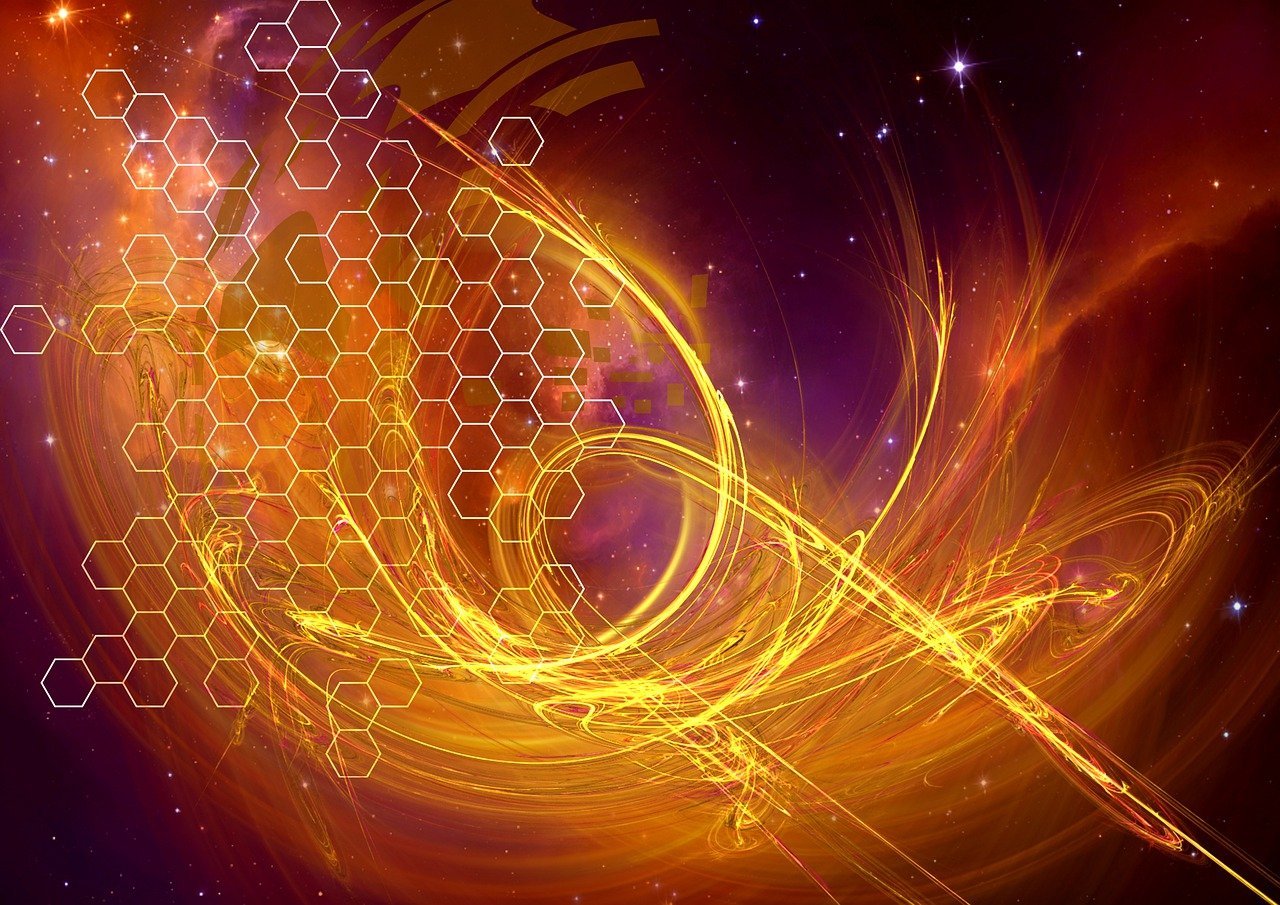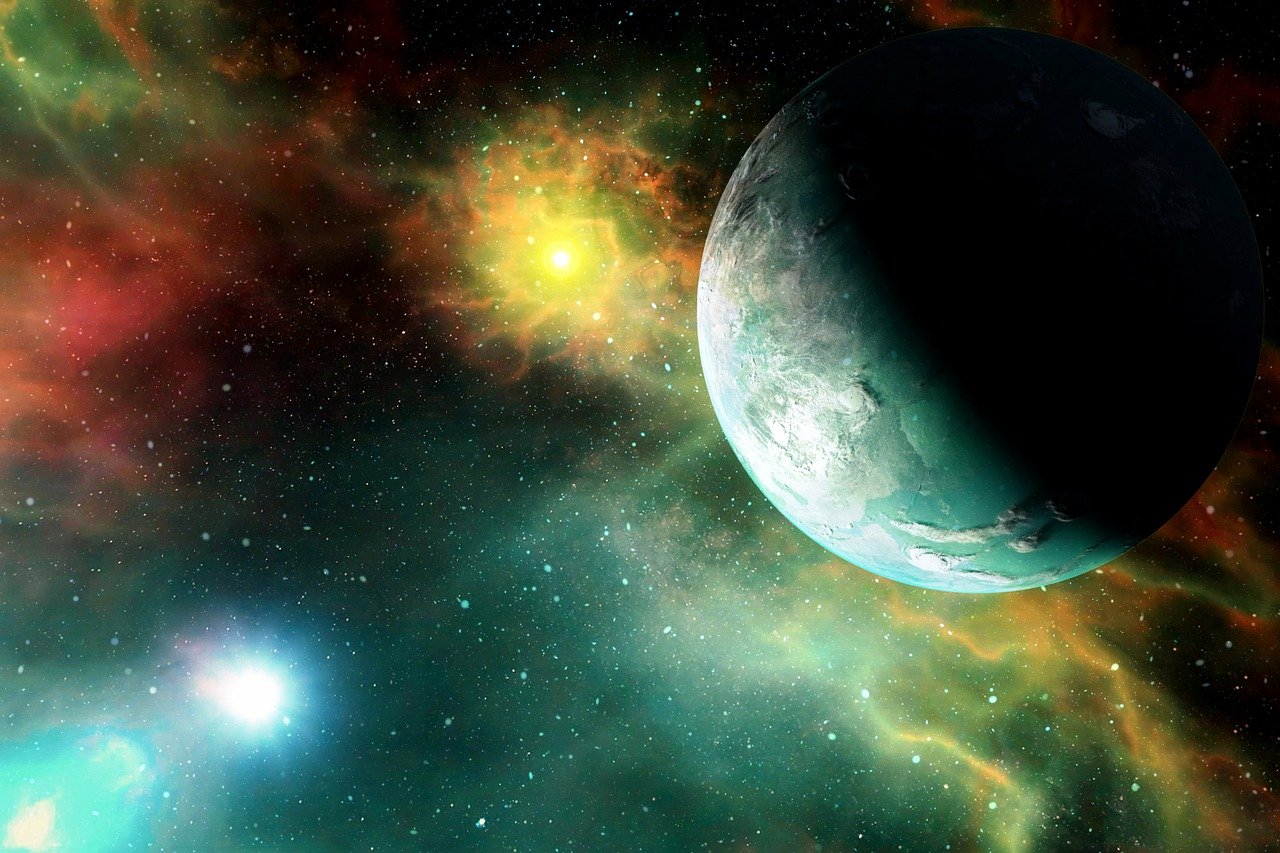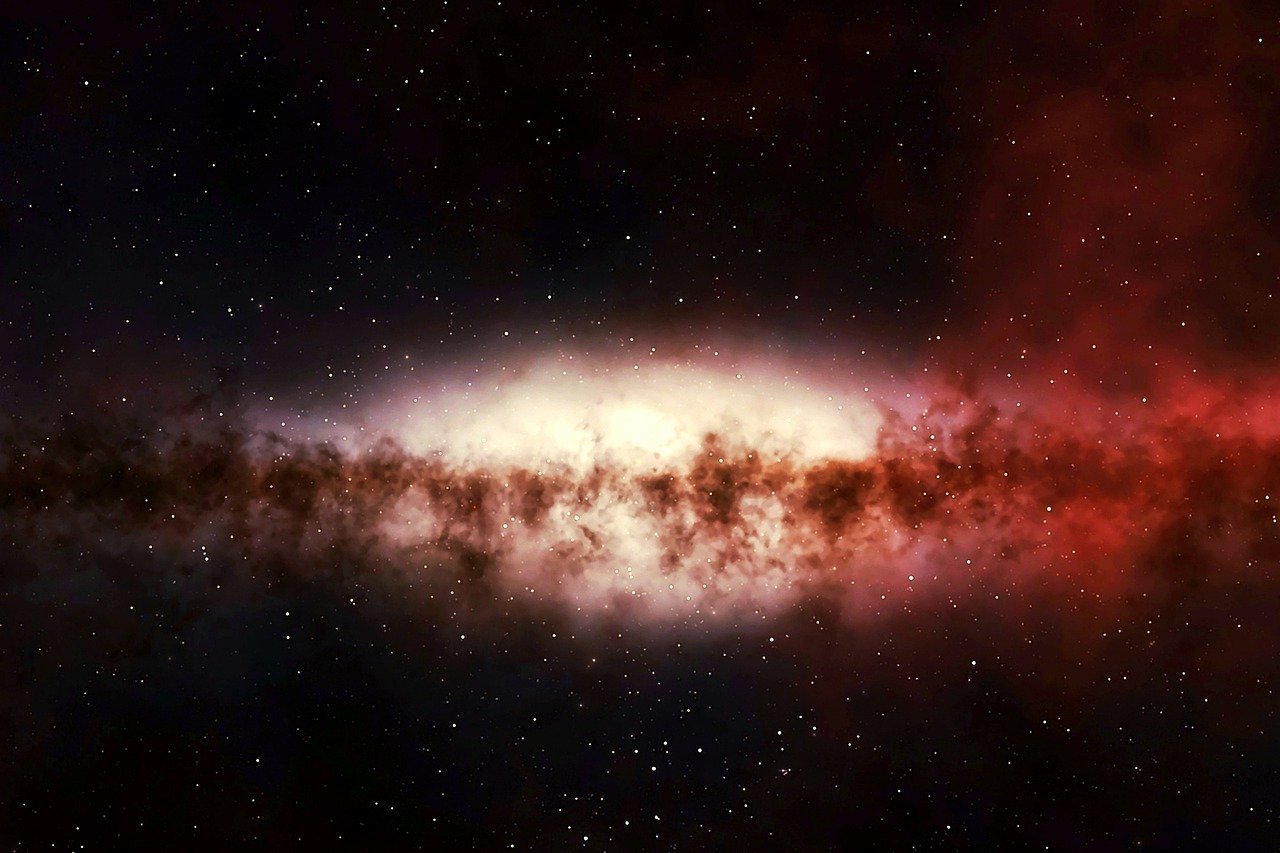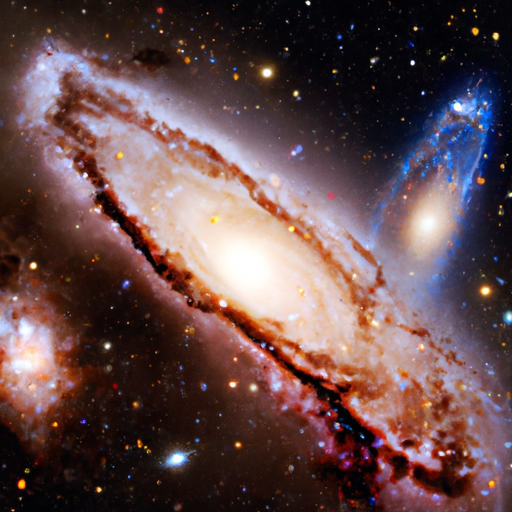Imagine a world where stars twinkle in the darkest night, galaxies spiral through the vast expanse of space, and mysterious black holes lurk in the depths of the universe. In this captivating article, we will take a journey through the cosmos, exploring the breathtaking wonders that exist beyond our earthly realm. From the magnificent beauty of galaxies to the mind-boggling phenomenon of black holes, prepare to be amazed by the extraordinary objects that populate our universe.
Galaxies
What are Galaxies?
Galaxies are vast systems of stars, gas, dust, and other celestial objects bound together by gravity. They are the building blocks of the universe, containing billions or even trillions of stars. Each galaxy is like a giant city in the cosmos, with its own unique characteristics and structures.
Types of Galaxies
There are three main types of galaxies: spiral galaxies, elliptical galaxies, and irregular galaxies. Spiral galaxies, like our Milky Way, have a distinct spiral shape with a central bulge and rotating arms. Elliptical galaxies, on the other hand, have a more rounded and elongated shape. Irregular galaxies lack a distinct shape and have a random distribution of stars.
Formation of Galaxies
Galaxies are thought to have formed from the gravitational collapse of vast clouds of gas and dust in the early universe. As the gas and dust came together, their own gravity caused them to clump and eventually form stars. Over time, these stars and their gravitational interactions shaped the galaxies we observe today. The exact process of galaxy formation is still not fully understood and remains an active area of research.
Structure and Features of Galaxies
Galaxies have a hierarchical structure, consisting of stars, star clusters, and various interstellar objects such as nebulae and supernovae. They are held together by gravity and revolve around a central point called the galactic nucleus. Galaxies also contain dark matter, an invisible substance that makes up a significant portion of the galaxy’s mass. Additionally, many galaxies have supermassive black holes at their centers, which play a crucial role in their evolution.
Milky Way: Our Home Galaxy
The Milky Way is the galaxy that is home to our solar system. It is a spiral galaxy with a distinct central bulge and rotating arms. Our solar system lies within one of the Milky Way’s spiral arms, known as the Orion Arm. The Milky Way contains billions of stars, as well as various other astronomical objects such as planets, moons, asteroids, and comets. It is truly a remarkable cosmic neighborhood that continues to captivate scientists and astronomy enthusiasts alike.
Stars
What are Stars?
Stars are luminous celestial objects made up of gas and plasma. They emit light and heat due to the nuclear fusion reactions occurring within their cores. Stars vary in size, brightness, color, and lifespan. They are essential for providing heat and light to their respective planetary systems, including our own solar system.
Life Cycle of Stars
Stars have a life cycle that begins with the birth of a protostar, which forms from a dense cloud of gas and dust. As the protostar accumulates more matter, it becomes denser and hotter. Eventually, the core temperature reaches a critical point, triggering nuclear fusion. This fusion process releases an incredible amount of energy, causing the star to emit light and heat.
The lifespan of a star depends on its mass. Small stars, known as low-mass stars, burn their fuel slowly and can live for billions of years. They eventually evolve into red giants and then white dwarfs. On the other hand, high-mass stars burn their fuel quickly and live relatively shorter lives. They end their lives in dramatic supernova explosions, leaving behind dense remnants such as neutron stars or black holes.
Types of Stars
Stars come in various types, classified based on their temperature, size, and luminosity. The most common types include red dwarfs, yellow dwarfs (like our Sun), blue giants, and red supergiants. These classifications help us understand the different stages in a star’s life, as well as its properties and behavior.
Star Sizes and Colors
Stars can vary significantly in size, ranging from small, dense white dwarfs to massive, luminous supergiants. The size of a star directly affects its luminosity and temperature. The colors of stars also vary depending on their temperature. Hotter stars appear bluish-white, while cooler stars appear red or orange. The range of star sizes and colors across the universe is truly awe-inspiring.
Nuclear Fusion: Powering Stars
The energy that stars emit comes from the process of nuclear fusion. In the core of a star, hydrogen atoms fuse together to form helium, releasing a tremendous amount of energy. This fusion process converts mass into energy according to Einstein’s famous equation, E = mc². The energy generated from nuclear fusion is what makes stars shine brightly throughout the universe.

Planets
Introduction to Planets
Planets are celestial objects that orbit around a star and do not produce their own light. They are much smaller than stars and are made up of solid material or gas. Planets often have an atmosphere and may have moons or other natural satellites orbiting around them. Our solar system has eight planets, including Earth.
Terrestrial Planets
Terrestrial planets, also known as rocky planets, are similar in composition to Earth. They have solid surfaces and are relatively close to the Sun in our solar system. The terrestrial planets include Mercury, Venus, Earth, and Mars. These planets have thin or non-existent atmospheres and are characterized by their rocky terrain and geological activity.
Gas Giants
Gas giants, also referred to as Jovian planets, are composed mostly of hydrogen and helium. They are much larger than terrestrial planets and have thick atmospheres with swirling storms and giant belts of clouds. The gas giants in our solar system are Jupiter and Saturn. These awe-inspiring planets have mesmerized astronomers with their complex atmospheric dynamics and magnificent rings.
Exoplanets: Planets Beyond Our Solar System
Exoplanets are planets that exist outside of our solar system. With advancements in technology, astronomers have been able to detect and characterize thousands of exoplanets. These planets come in a wide range of sizes and orbit different types of stars. The discovery of exoplanets has revolutionized our understanding of planet formation and the potential for habitable worlds beyond our solar system.
Habitable Zone: Finding Earth-like Planets
The habitable zone, also known as the Goldilocks zone, refers to the region around a star where conditions may be just right for liquid water to exist on the surface of a planet. Liquid water is vital for the development of life as we know it. Scientists search for exoplanets within the habitable zone in the hopes of finding Earth-like planets that could potentially support life. The study of habitable zones contributes to our understanding of the possibility of extraterrestrial life in the universe.
Moons
What are Moons?
Moons are natural satellites that orbit around planets. They are smaller than planets but larger than asteroids and comets. Moons are commonly found in our solar system, and many planets have multiple moons of varying sizes.
Natural Satellites in Our Solar System
Our solar system is home to over 200 known moons, with most orbiting the gas giants, Jupiter and Saturn. Earth has one moon, aptly named the Moon. Some of the most famous moons in our solar system include Europa, a moon of Jupiter, and Titan, a moon of Saturn. These moons have unique characteristics and have been the focus of scientific exploration.
Formation of Moons
Moons are believed to be formed through various processes. One common theory is that moons form from the debris left over after a planet’s formation. Another theory suggests that moons can be captured by a planet’s gravity, pulling them into orbit. The exact formation mechanism for each moon varies, and further research is needed to fully understand their origins.
Interesting Moon Facts
Moons come in different shapes, sizes, and compositions. Some moons have atmospheres, such as Saturn’s moon, Titan, which has a thick, hazy atmosphere similar to Earth’s. Other moons are covered in icy surfaces, like Jupiter’s moon, Europa, which is believed to have a subsurface ocean of liquid water. Moons continuously fascinate scientists and astronomers with their diverse features and potential for harboring life.
Tidal Effects and Moon Phases
Moons play a role in creating tidal effects on their host planets. The gravitational pull of a moon can cause the oceans on a planet to bulge, resulting in tidal waves and currents. Additionally, the motion of a moon around its planet causes different phases, such as the familiar waxing and waning of Earth’s Moon. The relationship between moons and their host planets is a delicate dance of gravity and celestial mechanics.

Asteroids and Comets
Asteroids: Rocks in Space
Asteroids are rocky remnants left over from the early formation of our solar system. They are composed primarily of rock and metal and vary in size from small boulders to objects several hundred kilometers in diameter. Most asteroids are found in the asteroid belt, a region between the orbits of Mars and Jupiter, while others exist as individual bodies throughout our solar system.
Comets: Dirty Snowballs
Comets are icy bodies that originate from the outer regions of our solar system. They are composed of a mixture of frozen gases, dust, and rocky material. Comets have highly elliptical orbits that take them close to the Sun, where they heat up and release gas and dust, creating a glowing coma and sometimes a magnificent tail.
Origin and Composition
Asteroids and comets provide valuable insights into the early formation of our solar system. They are remnants of the primordial material from which planets and other celestial bodies were born. By studying their compositions, scientists can learn about the chemical and physical processes that shaped our solar system and understand the building blocks of planets and moons.
Famous Comets and Asteroids
Throughout history, several comets and asteroids have captured the fascination of astronomers and the public alike. Comet Hale-Bopp, with its stunningly bright tail, is one of the most famous comets of the 20th century. Asteroid Toutatis, known for its irregular shape and close encounters with Earth, has been closely observed by astronomers. These celestial objects remind us of the dynamic nature of our universe and the ever-present potential for new discoveries.
Impacts and Extinction Events
Asteroids and comets have played a significant role in shaping the history of our planet. Large impacts from these objects have caused mass extinctions and influenced the evolution of life on Earth. The most notable impact event is believed to have led to the extinction of dinosaurs about 65 million years ago. By studying impact craters and the remnants of ancient impacts, scientists gain insight into these catastrophic events and the potential risks they pose to our planet.
Nebulae
What are Nebulae?
Nebulae are vast clouds of gas and dust scattered throughout galaxies. They are often considered the “birthplaces” of stars, as they provide the necessary materials for star formation. Nebulae are incredibly beautiful and display a wide range of shapes and colors, making them a favorite target for both amateur and professional astronomers.
Types of Nebulae
There are several types of nebulae, each with its distinct characteristics. The most common types include emission nebulae, reflection nebulae, and dark nebulae. Emission nebulae glow brightly due to the ionization of gas by nearby stars. Reflection nebulae reflect the light of nearby stars, giving them a bluish appearance. Dark nebulae are dense regions of gas and dust that block light, creating a stark contrast against the background stars.
Formation of Nebulae
Nebulae form through various processes, such as supernova explosions or the gravitational collapse of interstellar gas and dust. When a massive star explodes in a supernova, it releases vast amounts of energy and materials into the surrounding space. These ejected materials mix with existing gas and dust, forming nebulae. Additionally, the gravitational collapse of dense molecular clouds can trigger the formation of new nebulae and star clusters.
Stellar Nurseries
Nebulae are often referred to as stellar nurseries because they provide the ideal conditions for star formation. Within these clouds, gravitational forces cause the gas and dust to collapse and clump together. As the clumps become denser, they transform into protostars, which eventually evolve into fully-fledged stars. The birth of stars within nebulae is a continuous process, creating a rich tapestry of stellar life and diversity throughout the universe.
The Famous Orion Nebula
The Orion Nebula, also known as Messier 42, is one of the most famous and easily recognizable nebulae in the night sky. Located in the constellation of Orion, this emission nebula is a hotbed of star formation. Its distinctive pinkish glow and intricate structure have made it a favorite target for astrophotographers and amateur astronomers. The Orion Nebula provides a glimpse into the cosmic spectacle of stellar birth and the remarkable beauty of the universe.

Black Holes
Understanding Black Holes
Black holes are mysterious and fascinating objects in our cosmos. They are regions of space where gravity is so strong that nothing, not even light, can escape their gravitational pull. Black holes form from the remnants of massive stars that have undergone gravitational collapse. As a result, they have an incredibly high mass in a small volume, creating a gravitational field that defies our conventional understanding of physics.
Formation and Types of Black Holes
Black holes can form through two main processes: stellar collapse and supermassive black hole formation. Stellar black holes form from the collapse of massive stars, where the core of the star becomes so dense that it collapses under its own gravity. Supermassive black holes, on the other hand, are believed to form from the accumulation of mass over time in the centers of galaxies.
Event Horizon: Point of No Return
The event horizon of a black hole is the boundary beyond which nothing can escape. It is the point of no return, marking the region where the gravitational pull becomes infinitely strong. Anything that crosses the event horizon will be pulled into the black hole’s singularity, a point of infinite density and gravitational force.
Spaghettification: The Extreme Force
As an object gets closer to a black hole, the difference in gravitational pull across its length becomes significant. This phenomenon, known as spaghettification, causes the object to be stretched and distorted into long, thin shapes, like a strand of spaghetti. The extreme forces near a black hole can tear apart even the most solid objects, illustrating the immense power and gravitational influence of these cosmic beasts.
Supermassive Black Holes
Supermassive black holes are millions or even billions of times more massive than stellar black holes. They exist in the centers of most galaxies, including our own Milky Way. The origins of supermassive black holes are still not fully understood, but they are believed to play a crucial role in the evolution of galaxies and the formation of galactic structures. The study of these colossal black holes is a captivating area of research in astrophysics.
Cosmic Phenomena
Supernovae
Supernovae are incredibly powerful explosions that occur at the end of a massive star’s life. During a supernova, a star releases an enormous amount of energy and materials into space, briefly outshining an entire galaxy. These explosive events distribute heavy elements and play a vital role in enriching the universe with the building blocks of life.
Gamma-Ray Bursts
Gamma-ray bursts are short, intense bursts of gamma-ray radiation that come from distant regions of the universe. They are thought to be associated with supernovae and the formation of stellar remnants, such as neutron stars or black holes. Gamma-ray bursts can be one of the most energetic events in the universe and can provide valuable insights into the physics of extreme phenomena.
Pulsars
Pulsars are highly magnetized, rotating neutron stars that emit beams of electromagnetic radiation. These beams can be observed as regular pulses of light as the star rotates. Pulsars are incredibly dense and have strong magnetic fields, making them valuable tools for studying the behavior of matter under extreme conditions.
Quasars
Quasars, short for quasi-stellar radio sources, are the bright cores of distant galaxies. They emit an enormous amount of energy and can outshine an entire galaxy. Quasars are powered by supermassive black holes at their centers, which accrete large amounts of surrounding material. The study of quasars provides insights into the behavior of matter around black holes and the evolution of galaxies.
Gravitational Waves
Gravitational waves are ripples in the fabric of spacetime caused by the acceleration of massive objects. These waves were predicted by Albert Einstein’s theory of general relativity and were first directly detected in 2015. Gravitational waves provide a new way of observing and studying the universe, allowing us to observe events such as the collision of black holes or neutron stars that were previously invisible to us.

Dark Matter and Dark Energy
Unseen Forces in the Universe
Dark matter and dark energy are two unseen forces that dominate the structure and evolution of our universe. They make up the vast majority of the cosmos, yet their nature remains elusive and mysterious. Dark matter and dark energy do not emit, absorb, or reflect light, making them incredibly challenging to detect and study.
Dark Matter: The Invisible Mass
Dark matter refers to a hypothetical type of matter that does not interact with light or other forms of electromagnetic radiation. Its presence is inferred through its gravitational influence on visible matter and the large-scale structures of the universe. Dark matter is believed to be five times more abundant than regular matter, forming an invisible scaffold that holds galaxies and galaxy clusters together.
Dark Energy: The Mysterious Force
Dark energy is an even more enigmatic force than dark matter. Unlike dark matter, which exerts attractive gravity, dark energy is believed to be responsible for the accelerated expansion of the universe. It is thought to permeate all of space and is pushing galaxies away from each other. The exact nature of dark energy is still one of the most significant unsolved mysteries in physics and cosmology.
Evidence for Dark Matter and Dark Energy
Although dark matter and dark energy cannot be directly observed, their effects can be detected indirectly through their gravitational interactions with visible matter. Observations of the rotational speeds of galaxies, the cosmic microwave background radiation, and the large-scale distribution of galaxies provide compelling evidence for the existence of dark matter and dark energy.
Current Theories and Research
Scientists are actively studying dark matter and dark energy to unlock the secrets of our universe’s composition and evolution. Various experiments, both on the ground and in space, are underway to directly detect and study dark matter particles. The properties and origins of dark energy are also subjects of intense research, with astronomers and physicists collaborating to shed light on these cosmic mysteries.
Origin and Fate of the Universe
The Big Bang Theory
The Big Bang theory is the prevailing scientific explanation for the origin of the universe. It proposes that the universe began as a singularity, an extremely hot and dense point, approximately 13.8 billion years ago. From this singularity, the universe rapidly expanded and cooled, giving rise to the formation of matter and energy.
Cosmic Inflation: Rapid Expansion
Cosmic inflation is a theory that suggests the universe underwent an incredibly rapid expansion in the fraction of a second following the Big Bang. This rapid expansion helps explain certain observed properties of the universe, such as its overall uniformity and the absence of certain cosmic relics. Cosmic inflation remains a topic of active research and debate among astrophysicists.
The Fate of the Universe
The fate of the universe is a subject that has captivated scientists and philosophers for centuries. Based on current observations and theoretical models, it is believed that the universe will continue to expand indefinitely. However, the rate of expansion and the ultimate fate of the universe depend on the amount of matter and energy it contains. If the amount of dark energy remains constant, the universe will continue to expand at an accelerated rate, ultimately resulting in a “Big Freeze” or “Heat Death” scenario.
Multiverse: Beyond Our Observable Universe
The concept of a multiverse suggests that our universe may be just one of many universes that exist beyond our observable realm. The idea stems from mathematical models and theoretical physics, such as string theory and inflationary cosmology. While the multiverse hypothesis remains speculative, it opens up exciting possibilities for understanding the fundamental nature of the cosmos.
Unanswered Questions
Despite significant progress in our understanding of the universe, there are still many unanswered questions that continue to intrigue scientists. Questions such as the nature of dark matter and dark energy, the origin of the Big Bang, and the existence of a multiverse challenge our current knowledge and serve as a driving force for ongoing research. The pursuit of answers to these questions not only expands our knowledge of the cosmos but also provides profound insights into the nature of reality itself.